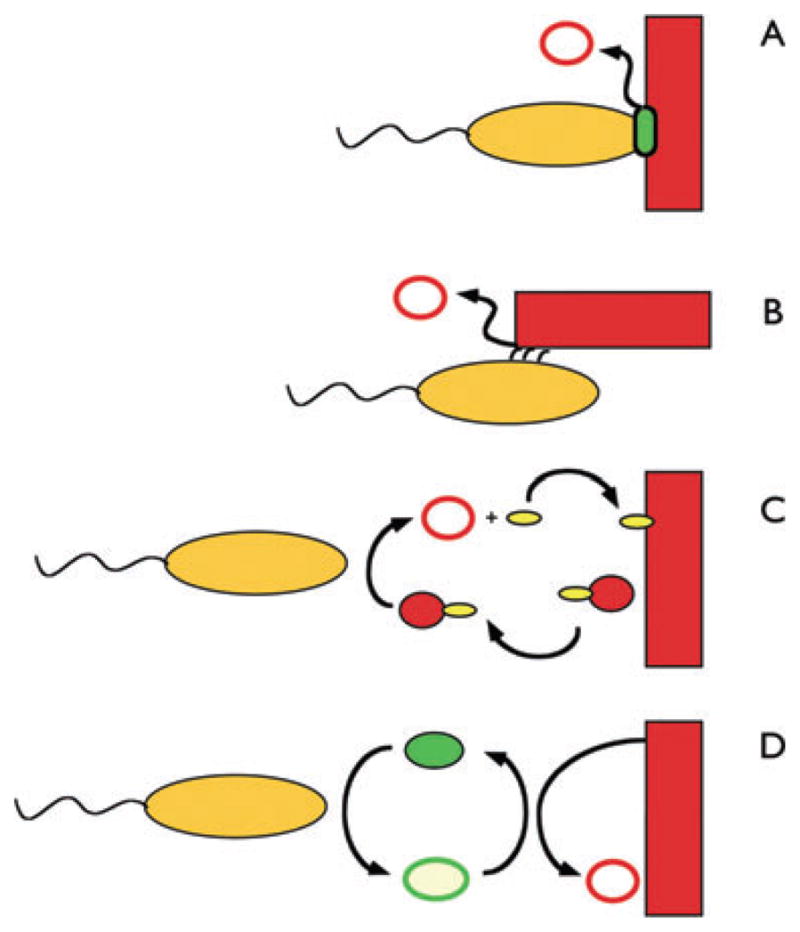Fig. 1.

Four potential strategies for extracellular respiration. In this cartoon, the substrate is depicted as a solid red rectangle [e.g. an iron (hydr)oxide] and its reduced product (e.g. ferrous iron) as an open red circle. As discussed in the text, this is but one example of extracellular respiration. Note that these strategies can apply to other substrates, and the flow of electrons can also be reversed. A. A protein that resides on the cell surface (green oval) directly interacts with the extracellular substrate to transfer electrons from the cell to the substrate.
B. A cellular appendage (such as an electrically conductive pilus) forms a bridge between the cell and the substrate, catalysing electron transfer.
C and D. A small molecule (such as a chelator, C) or an electron shuttle (D) interacts with the substrate outside the cell. In the case of a chelator (small yellow oval), the substrate is brought to the cell for reduction (either on the outside or on the inside); in the case of an electron shuttle (green oval; closed oval is in the oxidized state, open oval is in the reduced state), the substrate remains at a distance from the cell, with the shuttle catalysing the transfer of electrons between the cell and the substrate. The shuttle, in principle, could be reduced on the outside or inside of the cell.
